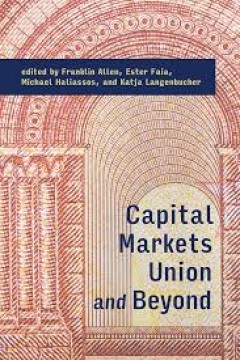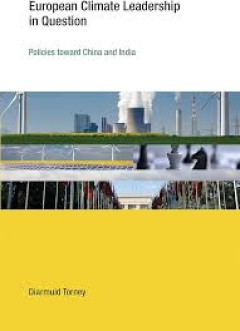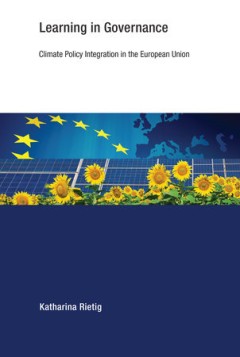Filter by

Capital markets union and beyond
OCLC-licensed vendor bibliographic record.
- Edition
- -
- ISBN/ISSN
- 9780262354264
- Collation
- 1 online resource (384 pages).
- Series Title
- -
- Call Number
- -

European climate leadership in question :policies toward China and India
The EU has, for a long time, portrayed itself as an international leader on climate change. Previous studies have tended to focus on the characteristics of EU leadership, but have failed to examine the extent to which EU leadership generates 'followship'. This book analyzes EU climate policies towards China and India in order to provide a holistic assessment of EU climate leadership, and makes …
- Edition
- -
- ISBN/ISSN
- 9780262329606
- Collation
- 1 online resource.
- Series Title
- -
- Call Number
- -

Prospects for monetary cooperation and integration in East Asia
East Asian countries were notably uninterested in regional monetary integration until the late 1990s, when the Asian financial crisis revealed the fragility of the region's exchange rate arrangements and highlighted the need for a stronger regional financial architecture. Since then, the countries of East Asia have begun taking steps to explore monetary and financial cooperation, establishing s…
- Edition
- -
- ISBN/ISSN
- 9780262265980
- Collation
- 1 online resource (xvi, 320 pages) :illustrations
- Series Title
- -
- Call Number
- -

Learning in governance :climate policy integration in the European Union
"This book helps us to better understand how learning in decision-making processes impacts policy change and the integration of climate change objectives into other policy areas in the European Union"--OCLC-licensed vendor bibliographic record.
- Edition
- -
- ISBN/ISSN
- 0262366789
- Collation
- 1 online resource.
- Series Title
- -
- Call Number
- -

Sharing knowledge shaping Europe U.S technological collaboration and nonproli…
How America used its technological leadership in the 1950s and the 1960s to foster European collaboration and curb nuclear proliferation, with varying degrees of success.OCLC-licensed vendor bibliographic record.
- Edition
- -
- ISBN/ISSN
- 9780262336413
- Collation
- 1 online resource.
- Series Title
- -
- Call Number
- -

Fulfilling the pledge :securing industrial democracy for American workers in …
"A review of labor law exploring the decline of union power and demonstrating how collective bargaining can continue to support worker power and improve economic outcomes for workers and communities despite macro shifts in the US economy over the past 40 years"--OCLC-licensed vendor bibliographic record.
- Edition
- -
- ISBN/ISSN
- 9780262377348
- Collation
- 1 online resource
- Series Title
- -
- Call Number
- -

Weapons in space :technology, politics, and the rise and fall of the Strategi…
"This is the first historical work that situates the Strategic Defense Initiative within a new phase in the militarization of space, uncovering a largely secret history of the role of military space technologies in late-Cold War U.S. defense strategy and foreign relations"--OCLC-licensed vendor bibliographic record.
- Edition
- -
- ISBN/ISSN
- 9780262377386
- Collation
- 1 online resource
- Series Title
- -
- Call Number
- -

Memory, edited :taking liberties with history
"Memory, Edited explores historical memory in the context of today's crises of extremism and polarization, showing how narratives that seem to reveal an "arc of history" leading to progress or salvation are false accounts that exclude some groups and privilege others. Rumsey gives us a deep look at 20th century Russian and Eastern European artists as a way of exploring the effects of authoritar…
- Edition
- -
- ISBN/ISSN
- 9780262376150
- Collation
- 1 online resource
- Series Title
- -
- Call Number
- -

Yesterday's tomorrow :on the loneliness of communist specters and the reconst…
Originally published in German under title: Gestern Morgen."In Yesterday's Tomorrow, Adamczak responds to right-wing criticism in English of her first book, Communism for Kids, and critiques tendencies on the left to sidestep the dark history and the path that Communism ended up taking. She takes the reader through a series of 8 turning-points in the betrayal of communism, moving in reverse chr…
- Edition
- -
- ISBN/ISSN
- 0262363518
- Collation
- 1 online resource.
- Series Title
- -
- Call Number
- -

Comrades no more :the seeds of political change in Eastern Europe
In 1989, Soviet control over Eastern Europe ended when the communist regimes of the Warsaw Pact collapsed. These momentous and largely bloodless events set the stage for the end of the Cold War and ushered in a new era in international politics. Why did communism collapse relatively peacefully in Eastern Europe? Why did these changes occur in 1989, after more than four decades of communist rule…
- Edition
- -
- ISBN/ISSN
- 9780262271349
- Collation
- 1 online resource (x, 305 pages) :1 map.
- Series Title
- -
- Call Number
- -
 Computer Science, Information & General Works
Computer Science, Information & General Works  Philosophy & Psychology
Philosophy & Psychology  Religion
Religion  Social Sciences
Social Sciences  Language
Language  Pure Science
Pure Science  Applied Sciences
Applied Sciences  Art & Recreation
Art & Recreation  Literature
Literature  History & Geography
History & Geography